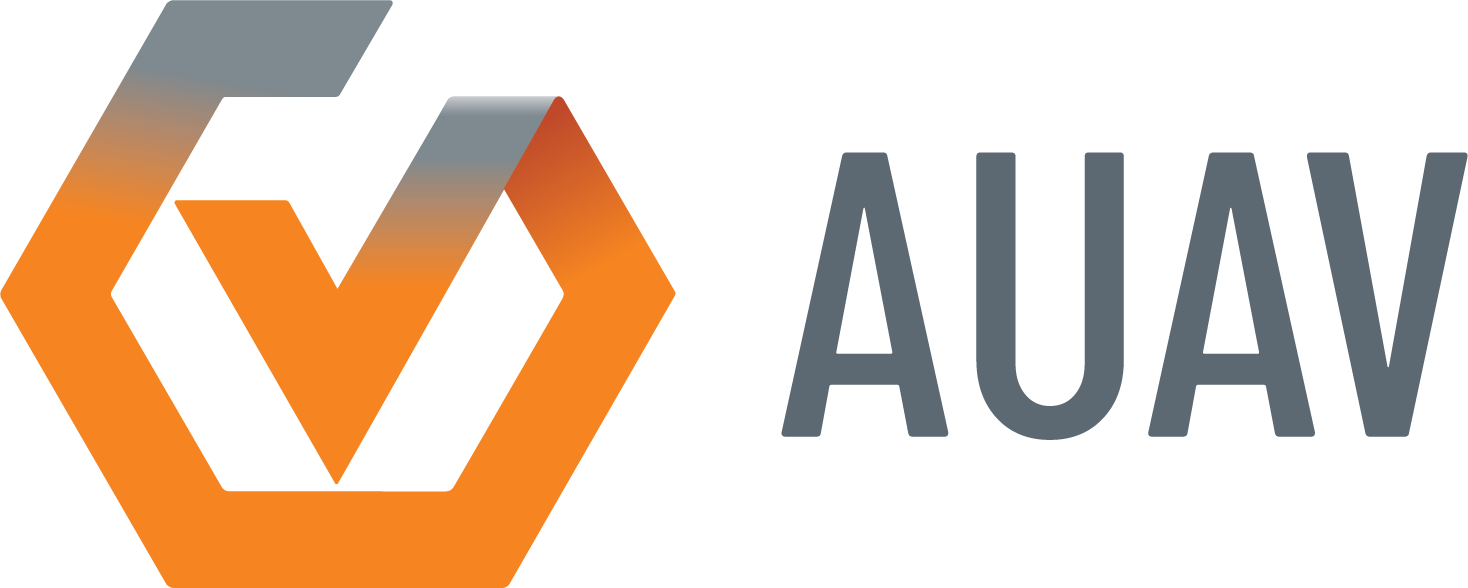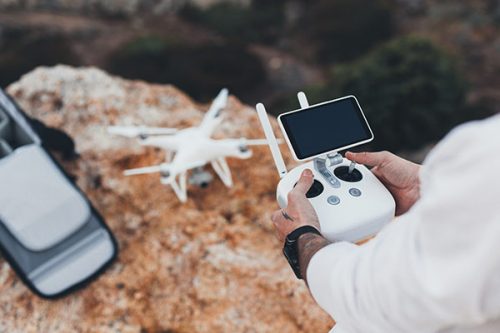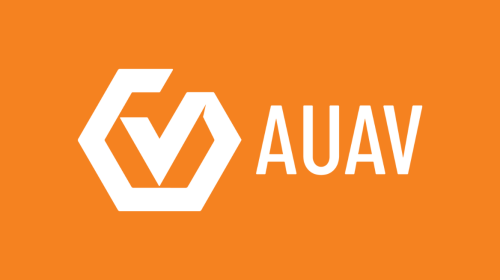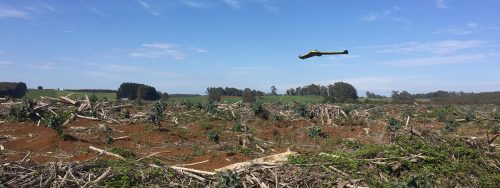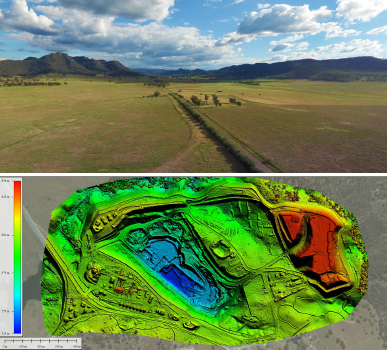It is common to analyse the Total Cost of Ownership (TCO) of assets in a business so you know what you’re really getting in for, and not just the initial ‘ticket price’. Given drones are a new field, this has been understandably lacking so far.
Inexpensive consumer-level drones can give people the wrong impression: the drone itself can be a small part of the overall cost, there are many other things to consider.
I often draw an analogy between someone having a drone and offering drone services, to someone having a scalpel and offering surgical services. The cost of the equipment can be irrelevant when risk is involved: it is the training, experience, and the ability to get the job done safely and reliably for the right outcome which is important.
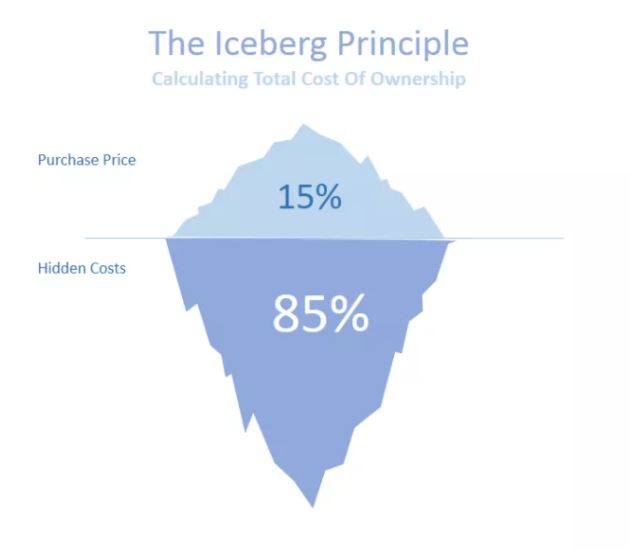
Cost of Technical Faults, Repairs and Replacement Parts
Drones are becoming more reliable all the time, but they are still a cutting-edge technology that has glitches from time to time, and this can have a high cost.
Using one of AUAV’s workhorse fixed-wing drones as an example, it was originally purchased for $25,000 and has had the following issues over the past 2 years:
- Pitch instability in flight, servos replaced (cost $1300).
- Radio modem failure (quoted $1600, avoided by us disassembling and re-soldering it).
- Camera failure, soft images, replaced at no cost.
- Autopilot failure (memory corruption), will not start (repair cost $5800).
- Autopilot overheating (quoted $8500 to replace, but in the end replaced free of charge due to past issue).
- Autopilot failure during flight, spiralled down causing minor damage, destroyed the camera (cost $1300).
- Camera failure, lens doors partially opening (cost to refurb camera $150).
- Servo failure, servos replaced (cost $1300).
- Replacement wings (cost $390).
- Replacement batteries, x8 (cost $2000 RRP, but we can make our own much cheaper).
The direct cost of these repairs and replacement parts adds up to over 50% of the purchase cost, so you could account for it as ~25% of the purchase cost per year after the first year warranty expires.
However, the more significant cost of these failures comes from lost or delayed work, re-mobilisation (e.g. flights and accommodation to remote locations), re-work, and being without the equipment for the weeks it can take to repair (sometimes months). These ‘soft’ costs can often add up to tens of thousands of dollars, i.e. more than the original purchase cost of the equipment. The most recent autopilot failure occurred on 30th December 2016, and we did not get the aircraft back into service until 15th March 2017, so that is a lot of downtime.
The manufacturer of these drones offers an extended warranty service plan for ~$11,000 (i.e. about 44% of the purchase cost) per year. Although that is a higher cost than we have found the maintenance to be, it does allow for loaner units while your own is in for repair. So this option can go some way to defray the above costs, but obviously not the lost work or re-mobilisation from the initial failure. For that reason, for most jobs that AUAV undertakes, we will mobilise with multiple UAV units to act as backup. If we hit a technical glitch, we can usually swap to the backup and continue working.
So if purchasing your own drones for use in your business, consider the cost of keeping a complex piece of technology running over time, and also whether there is a cost impact to your business from any delays which might occur.
Depreciation of Equipment
Given it is new technology, drones have a fairly limited shelf-life at this point. Some may not last this long due to rough treatment or if you wanted to upgrade to newer gear, but a 2 year depreciation cycle is a pretty safe bet at this point.
Using the above example of a $25,000 drone purchase, that is over $1000 per month in depreciation costs.
Cost of Additional Equipment
If you are only taking some simple aerial photos or video then there is not much else in the way of equipment needed. Assuming you already have a basic computer and software to edit the imagery then perhaps account for an additional $1k or so for spare batteries, chargers, a backup storage drive, etc.
However, if you are planning to undertake more data-intensive use of the drones such as aerial survey or 3D structure modelling, then you need to consider some additional gear.
One thing often overlooked for survey work is the need for ground control to guarantee the accuracy of the aerial data. Precision GPS survey equipment costs around $25-$40k, and there is also the subscription to a data corrections network (another couple of thousand per year depending on options you need). If doing this work in very remote locations then you will likely need a second GPS unit to act as a base station, so in this scenario you may need to double that cost. An alternative is AeroPoints, which can be much more affordable if you are doing small to medium size sites, and we include AeroPoints as an option in our FYOD packages.
Survey work generates a lot of data, and it needs some intensive computer processing to turn all the original imagery and ground control points into useful 3D survey outputs. To do this you need both a powerful computer (or multiple computers if you have a lot of data or need a fast turnaround time) plus specialist software. You should account for $4-$6k for the computer, and $10k for software such as Pix4D for the photogrammetry processing. You may also need additional software depending on the outputs required, e.g. AutoCAD or 12D. If the data is valuable over time (as is mostly the case with surveys) then you will also need a reliable off-site data backup solution so you don’t risk losing it. An alternative is cloud processing and storage, assuming you have fast internet connectivity. We recommend the Propeller cloud data processing in our Fly Your Own Drone solution for anyone who doesn’t want to manage the data processing themselves.
Cost of Training, and Staff Turnover
Drones and data processing is a complex task, so unless you already have the experience then training will be required. Allow for a few thousand per person in direct training costs, as well as accounting for them being absent from their existing duties.
In the longer run you should also consider staff turnover. A pattern we have seen in many of our clients is that they have someone within the company who is very excited about drones and wants to push to have that capability in house. After going through the purchase of equipment and the training, that person often moves on (sometimes to work for a drone company like AUAV so they can do it full time) and so you then need to train replacements. We recommend that if you are serious about having in-house drone capability, you maintain a pool of at least 3 people to keep that capability running reliably with no training or experience gaps.
Cost of Time, and Opportunity Cost
When AUAV is undertaking the work ourselves, we obviously charge for our time. It seems common though when comparing the costs for people to overlook that their own staff’s time is also valuable.
As an example, it will take a full day to undertake a 100ha site survey with a standard multi-rotor drone, so if that person is costing $50 per hour, then that is a direct cost of about $350 for their time.
However, the opportunity cost can be much higher. If flying drones is not your core business, it is likely that person is being taken away from other tasks, which depending on their place in the chain can have larger impacts. Most companies will have a figure in mind for lost productivity due to a sick day, so this is a good figure to add in to account for any day someone is away from their normal duties for drone work.
Cost of Aviation Insurance and Safety Management
Insurers view aviation as a special category, and is specifically excluded under most policies due to its risk profile. For example if your business uses its own or chartered aircraft to get to and from remote sites, you will have specific aviation insurance for this. Despite their small size drones still come under the aviation activity category, and so will not be covered by general business and liability insurance.
Larger companies will also have Safety Management plans in place to cover all activities on site which impose a degree of risk, and drones certainly fall into that category. Depending on the scale of the site or company you may need to account for a half day to formulate a simple Safe Work Method Statement (SWMS) to cover your drone operations, or it may involve a wider group of stakeholders or even amendments to your ISO certification processes.
Summary
Drones bring new capabilities and efficiency gains which can offer organisations a cost benefit far in excess of the Total Cost of Ownership of the drones themselves. However, the TCO and running costs are much higher than many people consider when they see a cheap drone at the local electronics or toy store.
Drone data can be incredibly valuable and much more cost-effective than alternatives, but it is not ‘cheap’.
And of course, if you run the numbers and it doesn’t add up to do the work yourself, AUAV’s national network of certified drone professionals are available to visit your site on a one-off or recurring basis. We’re happy to assess your needs and provide you with a quotation at any time.
